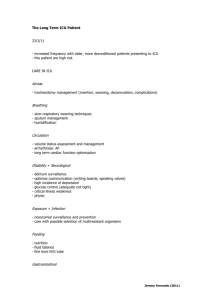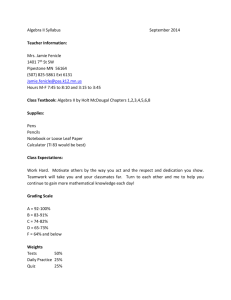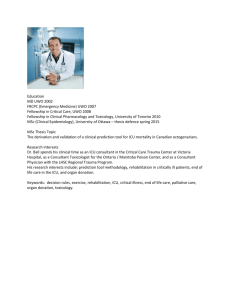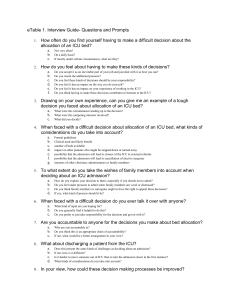if florence nightingale and walter dandy
advertisement
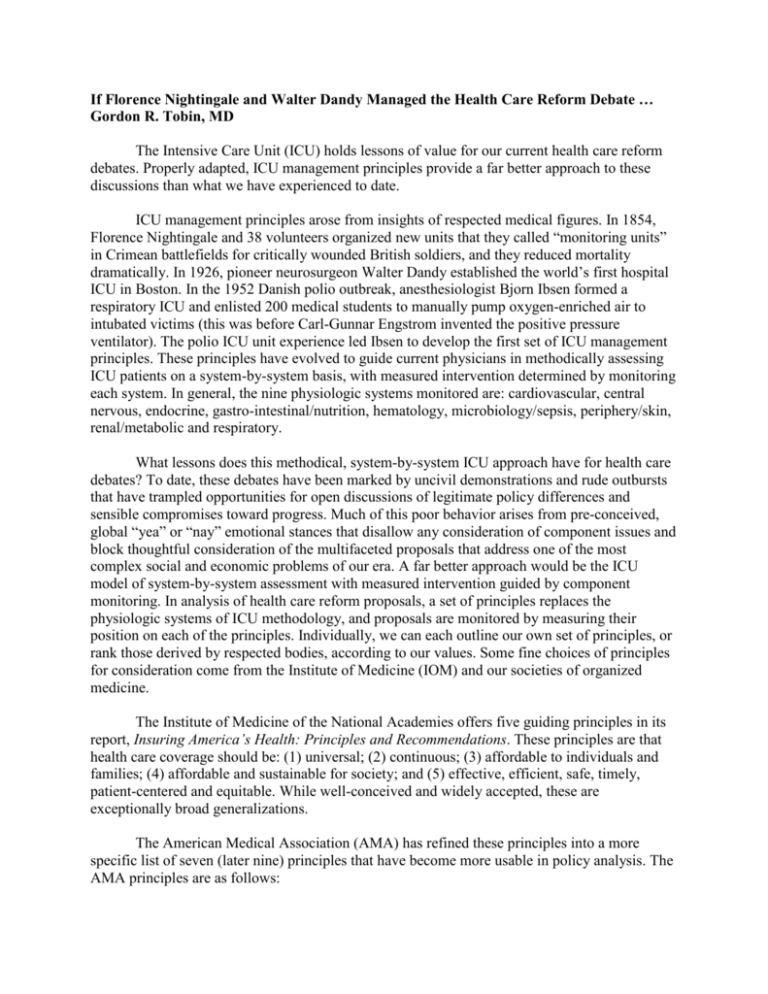
If Florence Nightingale and Walter Dandy Managed the Health Care Reform Debate … Gordon R. Tobin, MD The Intensive Care Unit (ICU) holds lessons of value for our current health care reform debates. Properly adapted, ICU management principles provide a far better approach to these discussions than what we have experienced to date. ICU management principles arose from insights of respected medical figures. In 1854, Florence Nightingale and 38 volunteers organized new units that they called “monitoring units” in Crimean battlefields for critically wounded British soldiers, and they reduced mortality dramatically. In 1926, pioneer neurosurgeon Walter Dandy established the world’s first hospital ICU in Boston. In the 1952 Danish polio outbreak, anesthesiologist Bjorn Ibsen formed a respiratory ICU and enlisted 200 medical students to manually pump oxygen-enriched air to intubated victims (this was before Carl-Gunnar Engstrom invented the positive pressure ventilator). The polio ICU unit experience led Ibsen to develop the first set of ICU management principles. These principles have evolved to guide current physicians in methodically assessing ICU patients on a system-by-system basis, with measured intervention determined by monitoring each system. In general, the nine physiologic systems monitored are: cardiovascular, central nervous, endocrine, gastro-intestinal/nutrition, hematology, microbiology/sepsis, periphery/skin, renal/metabolic and respiratory. What lessons does this methodical, system-by-system ICU approach have for health care debates? To date, these debates have been marked by uncivil demonstrations and rude outbursts that have trampled opportunities for open discussions of legitimate policy differences and sensible compromises toward progress. Much of this poor behavior arises from pre-conceived, global “yea” or “nay” emotional stances that disallow any consideration of component issues and block thoughtful consideration of the multifaceted proposals that address one of the most complex social and economic problems of our era. A far better approach would be the ICU model of system-by-system assessment with measured intervention guided by component monitoring. In analysis of health care reform proposals, a set of principles replaces the physiologic systems of ICU methodology, and proposals are monitored by measuring their position on each of the principles. Individually, we can each outline our own set of principles, or rank those derived by respected bodies, according to our values. Some fine choices of principles for consideration come from the Institute of Medicine (IOM) and our societies of organized medicine. The Institute of Medicine of the National Academies offers five guiding principles in its report, Insuring America’s Health: Principles and Recommendations. These principles are that health care coverage should be: (1) universal; (2) continuous; (3) affordable to individuals and families; (4) affordable and sustainable for society; and (5) effective, efficient, safe, timely, patient-centered and equitable. While well-conceived and widely accepted, these are exceptionally broad generalizations. The American Medical Association (AMA) has refined these principles into a more specific list of seven (later nine) principles that have become more usable in policy analysis. The AMA principles are as follows: (1) Health insurance coverage for all Americans. (2) An insurance market that expands choices of affordable coverage and eliminates denials for pre-existing conditions. (3) Assurance that health care decisions will remain in the hands of patients and their physicians, not insurance companies or government officials. (4) Investment incentives for quality improvement, prevention and wellness initiatives. (5) Repeal of the medical physician payment formula (SGR) that would trigger steep cuts and threaten seniors’ access to care. (6) Implementation of medical liability reforms to reduce the cost of defensive medicine. (7) Streamlining and standardizing insurance claim processing to eliminate unnecessary cost and administrative burdens. (8) Additional funding for primary care services, without offsetting reductions in specialty care. (9) Anti-trust relief. These principles conform to the IOM guidelines and provide a specific template for principle-by- principle evaluation of specific health care reform proposals. How does this approach work in practice? At the time of this writing, the Senate Finance Committee, chaired by Sen. Max Baucus, has just released a draft of its long-awaited proposal. Applying the principle-by-principle approach modeled on ICU protocol, monitor alarms immediately sound on two issues that are high priorities in my ranking. First, the draft does not include a permanent repeal of the faulted SGR formula. It simply maintains the status quo and defers the cumulated physician payment reduction to next year at an increased level (a reduction of more than 25 percent). Second, it pays for increased primary care reimbursement by equal cuts in specialty services. These two elements violate both the IOM principle of sustainability and the AMA principle of preserving seniors’ access to care. Individually and collectively, we must immediately voice strong, serious concerns about these elements to our elected representatives as the draft moves toward becoming the Senate version. By the same principles, the House of Representatives’ version (H.R. 3200) is very acceptable and far better on these two issues. Other issues will likely be exposed as we hold the ongoing process to scrutiny by our principles. Florence Nightingale, Walter Dandy and critical care physicians carrying their legacy manage critically ill patients with a component-by-component approach. However, the best possible outcome for the whole patient is the greater goal. In health care, the IOM and AMA have defined well the component principles of effective reform. Again, however, the ultimate goal is a sustainable system that brings better health to all Americans. Note: Dr. Tobin is chairman emeritus of the Division of Plastic and Reconstructive Surgery with University Surgical Associates PSC.


